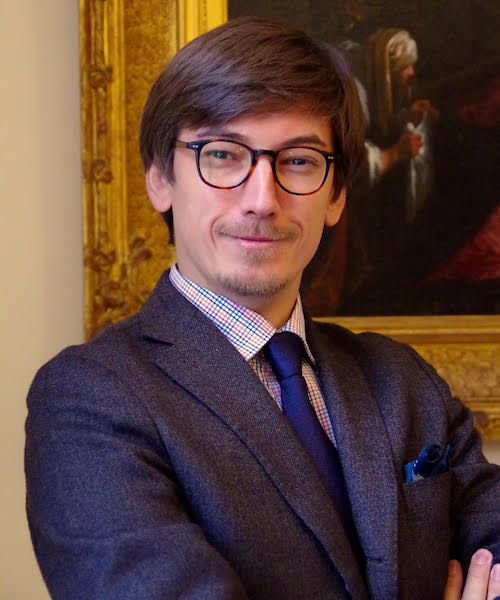The Autocephaly of the Orthodox Church of Ukraine: Ecumenical Perspectives

Responding to: Orthodoxy in Ukraine: Ecumenical and Theological Perspectives
 Since the independence of Ukraine in 1991, the confessional situation in the country has been characterized by a high level of religious freedom and pluralism. The latter made the Ukrainian case unique amongst its neighbors, where usually one denomination plays a dominant role (as in Russia, Romania, and Poland). In Ukraine, three Orthodox jurisdictions co-existed with two Catholic churches (Latin and Greek traditions), a variety of Protestant denominations, and traditional Jewish and Muslim (Crimean Tartar) populations.
Since the independence of Ukraine in 1991, the confessional situation in the country has been characterized by a high level of religious freedom and pluralism. The latter made the Ukrainian case unique amongst its neighbors, where usually one denomination plays a dominant role (as in Russia, Romania, and Poland). In Ukraine, three Orthodox jurisdictions co-existed with two Catholic churches (Latin and Greek traditions), a variety of Protestant denominations, and traditional Jewish and Muslim (Crimean Tartar) populations.
Historically, for the Catholic Church in Ukraine, dialogue with the Orthodox has proven to be a rather difficult task. The largest Orthodox church, part of the Moscow Patriarchate, was rather reluctant to engage in dialogue with Ukrainian Catholics. Relations with the other Orthodox jurisdictions in Ukraine were problematic from a Catholic perspective in that these communities had never been recognized by the Holy See, nor by worldwide Orthodoxy. The situation changed in January 2019, with the creation of the Orthodox Church of Ukraine (OCU). This Church has been subsequently recognized by the Patriarchate of Constantinople, the most important see of Orthodoxy, and, some months later, by the Orthodox Church of Greece and the Patriarchate of Alexandria.
The creation of an independent Orthodox church in Ukraine presents both serious risks and unique opportunities for the development of ecumenical dialogue. On the one hand, OCU’s autocephaly had a negative impact on both inter-Orthodox relations and, to a certain extent, on ecumenical relations at an international scale. The creation of an independent church in Ukraine led to a break of communion between Moscow and Constantinople, with a risk of creating division between the Greek-speaking and Slavonic churches.
A crisis of this sort constitutes a unique challenge for the Orthodox canonical framework and ecclesiology. Now, a crisis can be an occasion for growth. For example, in the West, the crisis of the medieval papacy and the Protestant Reformation forced the Roman Catholic Church to renew itself and its institutions. A renewal of this sort could happen within the Orthodox communion, which could be led to rethink how relationships between fifteen independent churches function. Another undesirable consequence, linked to the creation of the OCU, is that the disagreement between Constantinople and Moscow has led to the latter’s withdrawal from the official theological dialogue between the Roman Catholic and the Orthodox Churches. This act was motivated by the Russian decision to cease taking part in any commission presided or co-chaired by Constantinople. If the ecumenical dialogue is important for Moscow and Constantinople, they both should look for creative solutions, for example allowing a “neutral” jurisdiction to chair the Orthodox delegation at the dialogue with the Catholics.
On the other hand, however, the establishment of the new Orthodox church offers new perspectives for ecumenical dialogue in Ukraine. Firstly, with the recognition of the new church, Ukrainian Catholics have a legitimate and open-minded interlocutor. Ecumenical dialogue, which has been on standby since the 1990s, can now be reinvigorated, and Ukrainian Catholic Church, with its various human and institutional resources, in particular with the Ukrainian Catholic University and the Institute of Ecumenical Studies, can be very much on the frontline in this endeavor. On the one hand, this dialogue can familiarize the new Orthodox church to the major achievements of the official Catholic-Orthodox conversation, and, on the other hand, it can introduce Ukrainian Catholics to discussions within the broader Orthodox community. In the context where the two churches lack any robust experience of cooperation, there seems to exist some latent competition and reciprocal suspicion on the part of some of their members, hence the need to act with extreme prudence and transparency. At the same time, Catholics should not exclude the Ukrainian Orthodox Church in communion with the Moscow Patriarchate from its ecumenical endeavors, and conserve neutrally in the ongoing conflict between the two jurisdictions.
Secondly, Catholics could advise the Orthodox Church of Ukraine on how to strengthen its academic potential and expand its international partnerships. The communities that have now have merged into the Orthodox Church of Ukraine had previously lived in isolation for a number of decades and were unable to send students for studies abroad, to become members of ecumenical associations (such as the World Council of Churches), or to attend academic and interfaith meetings. If asked to do so by the new church, Ukrainian Catholics should make its academic programs and intellectual resources available in order to increase the quality of theological education within Orthodox establishments in Ukraine. For this endeavor to be truly ecumenical, both parties should renounce any proselytizing desire, and, not less importantly, avoid acting in a way which the Patriarchate of Moscow could reasonably perceive as threatening.
Thirdly, although at the present moment this seems to be a difficult thing to achieve, Ukrainian churches should not be burning bridges between them, but rather reflect on how they could contribute to reconciliation and peacebuilding in the country. Both the war in the Donbass region and recent electoral divisions point to a paramount need to reach a healthy civil understanding in the country. The churches can play an important role in this process. But in order to make their contribution, the churches must overcome the prevalent attitude of suspicion and start working together. There are precedents in recent history, during the Orange Revolution in 2004 and Revolution of Dignity in 2014, when the churches’ common reconciliatory position helped to reduce the violence of the parties in conflict. The need for ecumenical dialogue, however, is not only a factor of the church’s external relation to other communities, but also belongs to the very core of evangelical credibility. In fact, the antagonism, and even animosity, between various denominations in Ukraine has been one of the major obstacles for Christian witness. In order to make church communities more engaged and welcoming, they need to stop understanding themselves in terms of competition with fellow Christians, and instead start being open to learning with, and from, other churches. Reaching out to one another will constitute a vital contribution towards a new ethos of Christian communities in Ukraine built on openness and self-giving.
- Good Fences Make Good Neighbors: Autocephaly, Legitimacy, and Unity in Ukrainian Church Life
By: Nadieszda Kizenko - Orthodox Debates after the Creation of the Orthodox Church in Ukraine: A Necessary Catharsis
By: Nicholas Denysenko - Panorthodox Challenges and Opportunities Coming from the Ukrainian Autocephaly
By: Cyril Hovorun - The Autocephaly of the Orthodox Church of Ukraine: Ecumenical Perspectives
By: Pavlo Smytsnyuk - The Ecclesiastical Motherhood of the Orthodox Church in Ukraine
By: Jaroslaw Buciora









